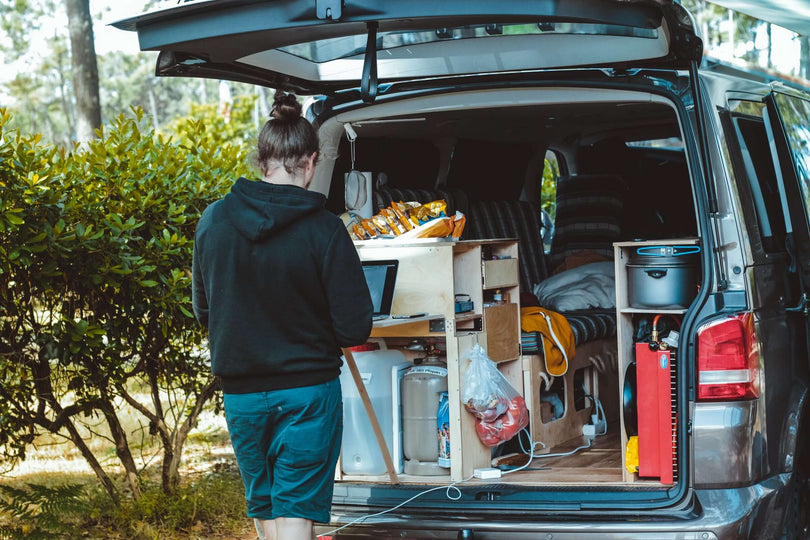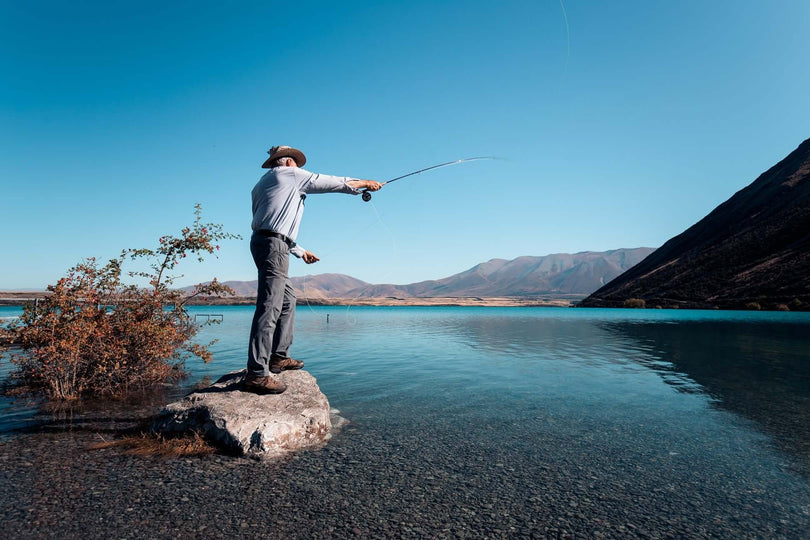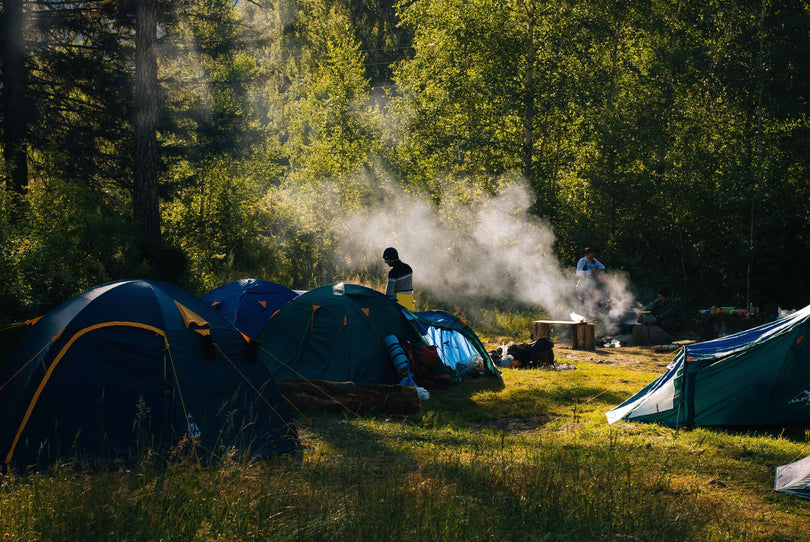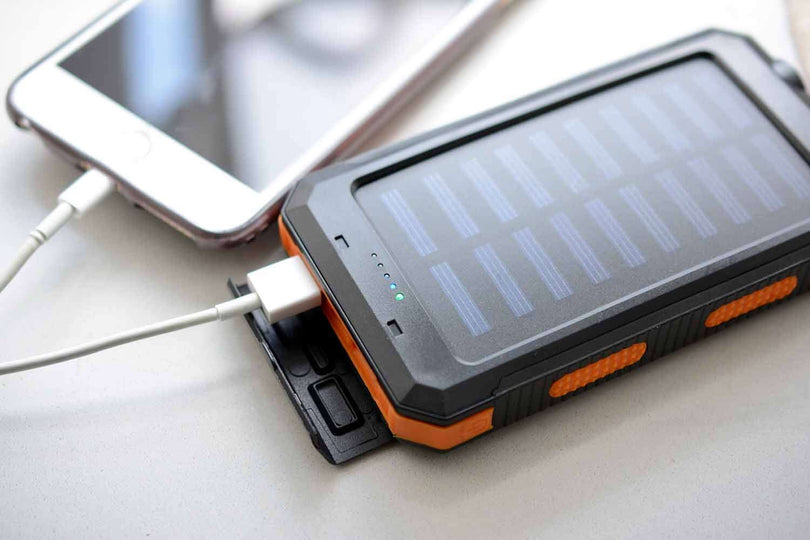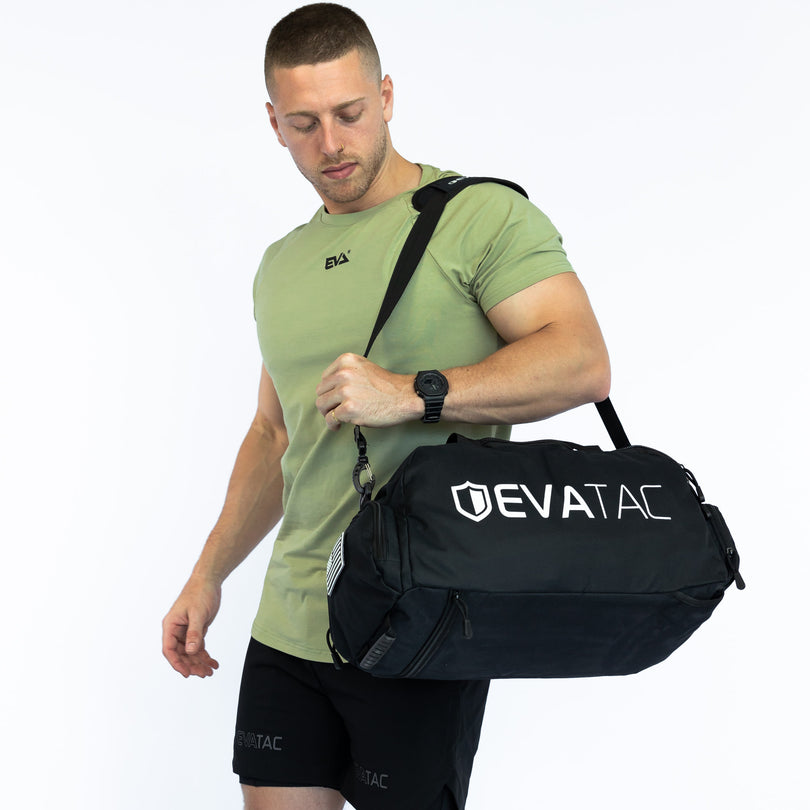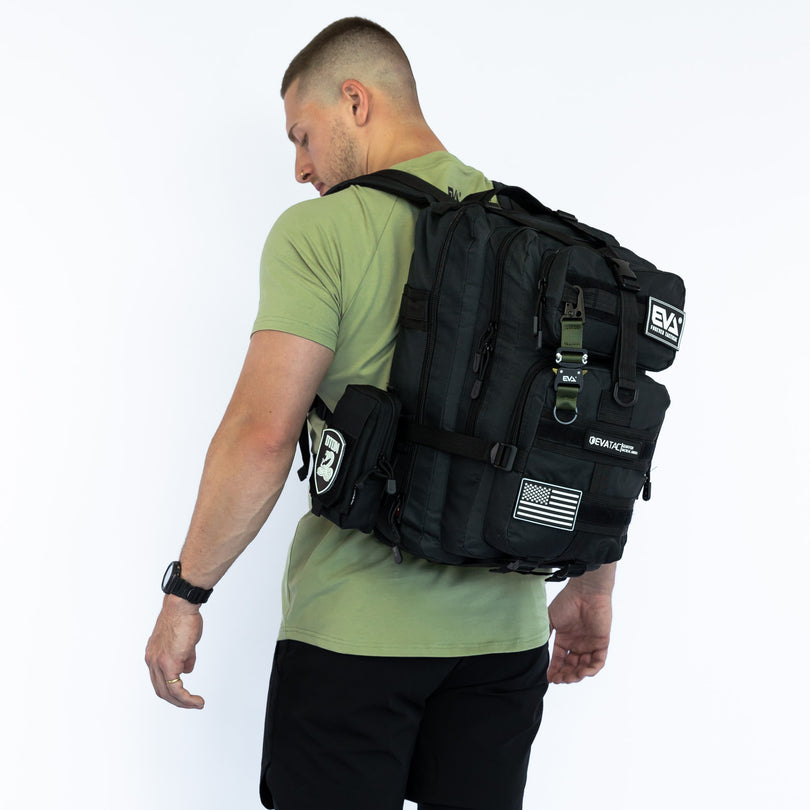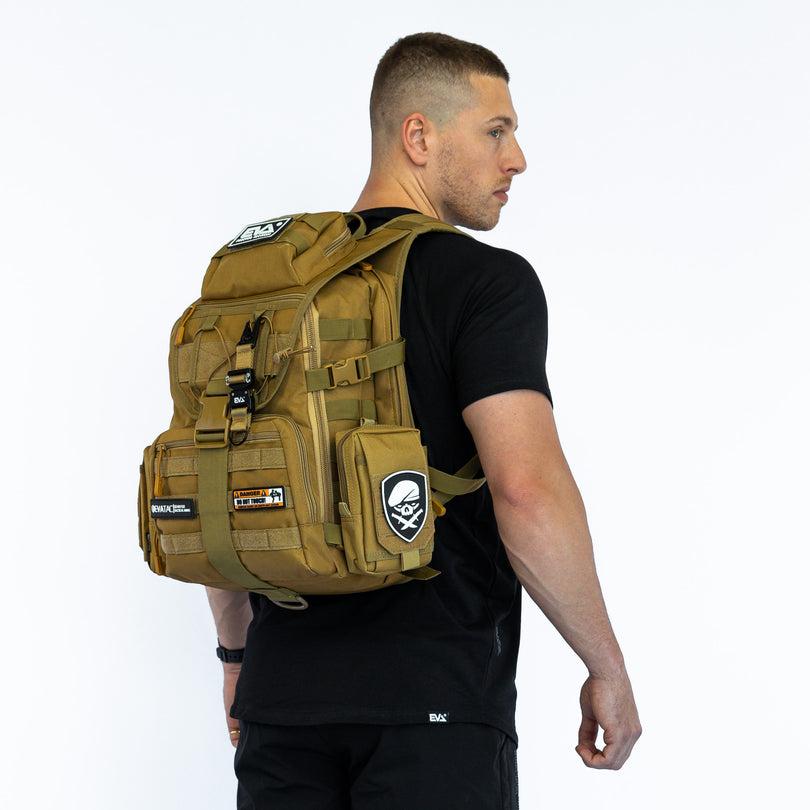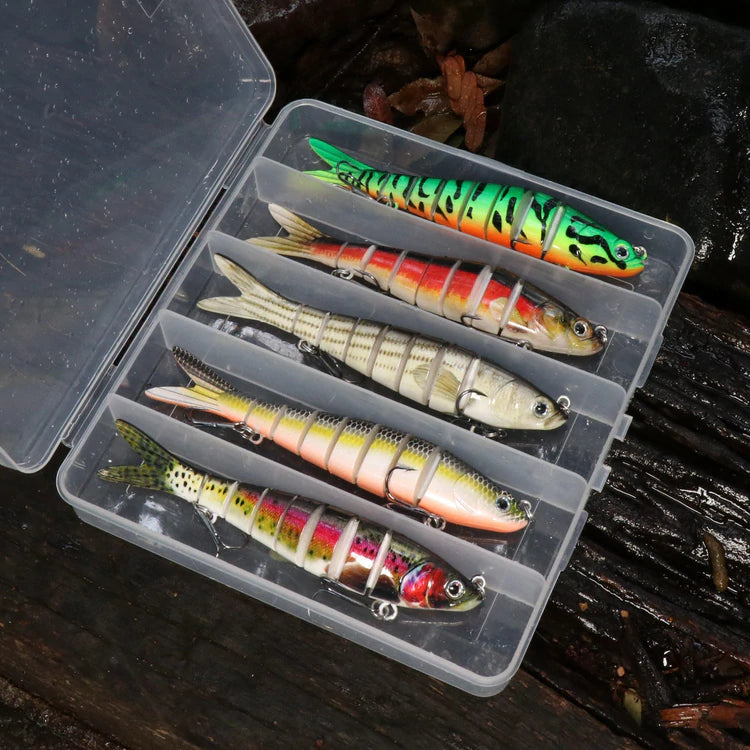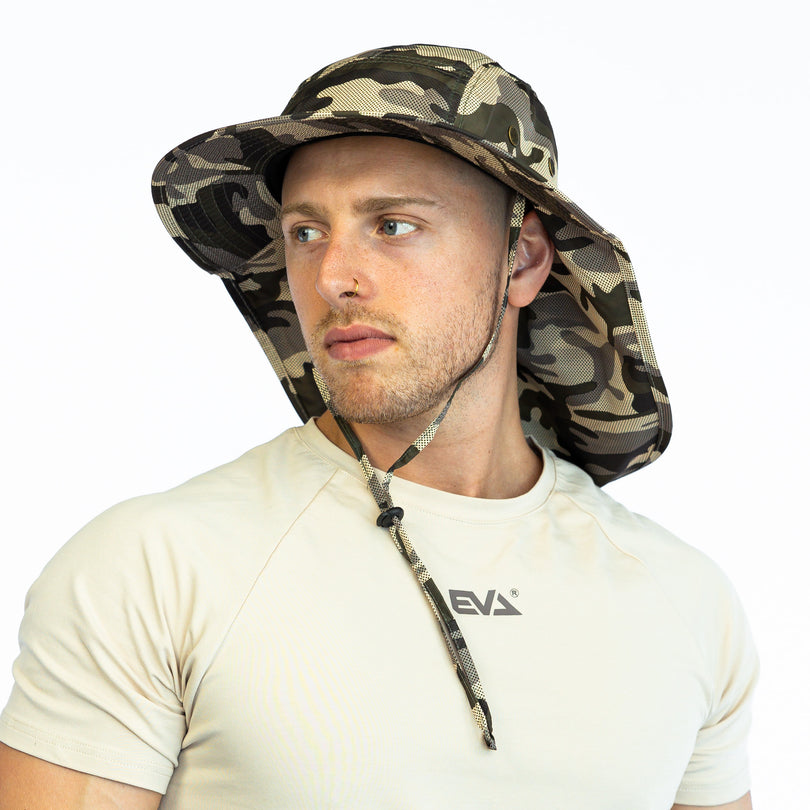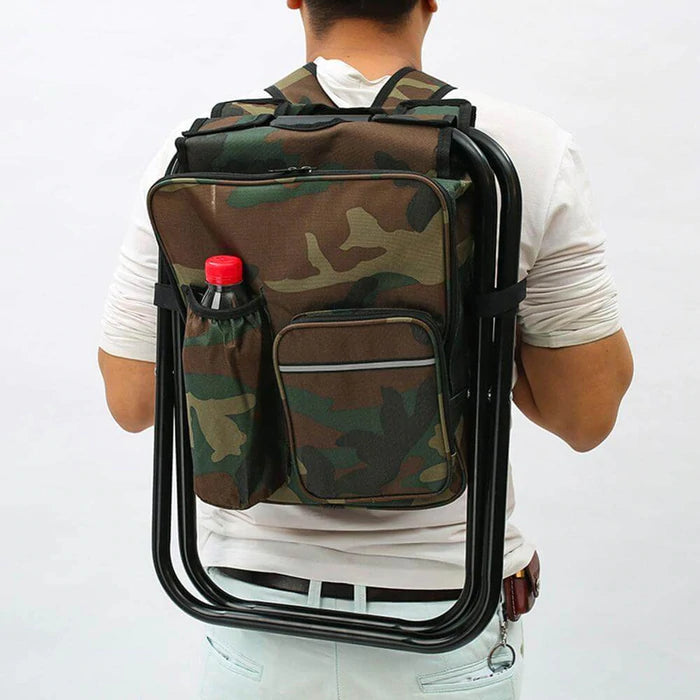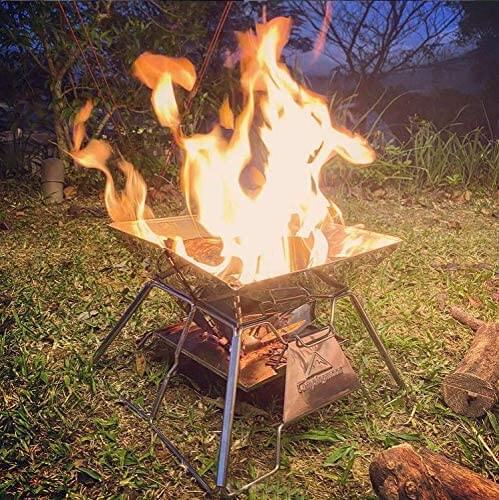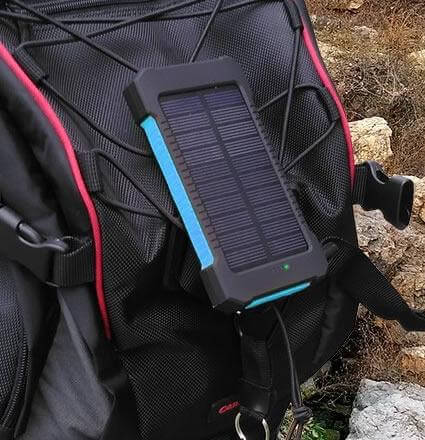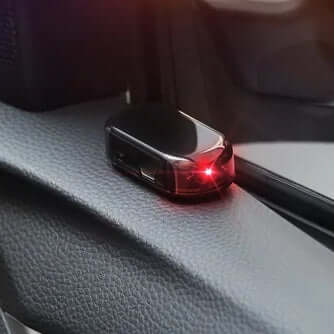You’re ready for an epic day hike. You have thought about the route, researched it, and can’t wait to finish your preparations. The weather is nice, you’re ready for the trail. The only thing left to do is decide what hiking essentials you should bring on your hike to keep you safe and comfortable on the trail.
Hiking in itself is a pleasurable activity but it can be a dangerous one if not carried out in the right way, so getting the necessary equipment and ensuring that you have the right knowledge about how to do it is essential. It’s time to gear up for your day hiking essentials checklist.
Whether you are packing for an intense workout hike or a leisurely stroll, Koala Outdoor shares a few items that should be at the top of your list. If one goes hiking without any necessary equipment then they are putting themselves at risk of injury and too much effort; which is why it’s important to invest in the seven essentials before embarking on a hike:
1. Backpack
This item is on of the most essential systems. A backpack is basically what holds your gea, first aid, and other safety equipment so it’s important to choose the right one, whether it be for day hikes or overnighters. When selecting a backpack there are various factors that must be considered including volume (how much stuff can fit in), the weight of load, comfort, and weather conditions.
How to choose a hiking backpack?
Choosing the best backpack for hiking might be difficult: there are many designs, models, and brands. But don’t worry!
Koala Outdoor is here to help you choose the best backpack for hiking by explaining the differences between different types of backpacks and what features to look for.
Size
First, decide what type of hiking you will be doing and how long your journeys will be. Then consider the amount of gear that you will need to carry, which will vary depending on the length of your hike. If you’re ascending a mountain for 6 hours to reach your destination, you will want to have as little weight on your back as possible. Depending on the gear you have and the number of days of your trip, the appropriate size can be anywhere between 30 and 80 liters.
If you're looking to travel for 25+ kilometres a day in the summer, you might want to get a backpack with a lower capacity and carry less gear. A 35L backpack like the Evatac provides enough capacity for a perfect two-day adventure.
Here's a chart with some general capacity estimates based on trip length.

Backpack features
Features are often the deciding factor for purchasing a backpack. Some features are essential for certain trips, and add ease to the entire journey or eliminate several water breaks. Features like integrated rain covers are ideal for travel in wetter climates, while hydration-compatible backpacks are great for all travel, especially in hot and dry climates. If you will be traveling in sub-zero temperatures, the hose on your hydration bladder may freeze so it’s important to keep these factors in mind.
Ventilation
Most hiking backpacks now have a breathable mesh ventilation system, which rests on your back, allowing the backpack to rest a few inches away from you. This is a tension-mesh suspension that allows air to flow between the mesh and your back, enhancing back ventilation.
Padding
Comfort is essential because you will carry your backpack for an extended period of time. Make sure there is adequate padding. Padded hip belts are important so that the majority of the pack load will sit on your hips and not on your shoulders. Padded shoulder straps also are important. A heavy load with minimally padded shoulder straps might result in sore back or shoulder joints after a long day.
Load adjuster straps and compression straps
The load adjuster straps connect the upper part of the shoulder straps to the top of the backpack. This allows you to pull the upper part of the backpack closer to your body to decrease stress on your lumbar area - they are only effective when the backpack is fully loaded. Compression straps pull the backpack's contents closer to your body for stabilization, lowering the center of gravity when not fully loaded
Pockets
If you're a pocket-lover, this will be one of the main features you look for when choosing a backpack:
Hip-belt pocket
It's essential for a great backpack to have many handy pockets that are ideal for snacks, extra batteries, a first aid kit, energy bars, a cell phone, or GPS devices. GPS devices are waterproof and rugged. It is easy to close and convenient so you can find exactly what you're looking for without having to stop or take off your backpack.
Side pockets
Most backpacks have elasticized side pockets that make the perfect spot to keep a water bottle for quick hydration. You can also keep sandals in these pockets. There's nothing better than taking off your hiking boots and throwing on some sandals once you reach camp.
Front pockets
This is a good place to stash a paper map or a dry jacket. Most bags will have at least one large pocket that has a zipper or a buckle closure. Some of these pockets will have smaller internal pockets for the organization. Others will be made of waterproof materials and intended for separating wet and dry gear.
Hydration compatibility
The hydration-compatible backpack lets you remain hydrated efficiently and conveniently so you don't have to take breaks. With the hose connected to a water bladder, which will attach to one of your shoulder straps. Thirsty? No problem! Grab the hose and drink up!
2. Clothing and footwear made for the outdoors

Comfort when hiking is key because it's important to protect yourself from the elements. You should layer your clothing so that you can easily adjust to different temperatures. You need comfortable clothing no matter what the weather, but what you wear depends on whether it's warm or cold outside. If you're gearing up to head out on a hike, you'll want to make sure you have the right equipment, including maps and other gear—but most importantly, you'll need extra clothes.
Wearing the right sun-protective clothes means considering the type of trail, temperature, and climate you'll be in—so before you get dressed, take these factors into consideration.
Baselayers
Comfort while hiking is key. For clothing, the layering system works best. A base layer keeps sweat away from the skin; a middle layer retains heat, and an outer layer shields you from elements such as rain. Depending on the weather, choose your layers accordingly. Many incredibly lightweight and synthetic clothing come with an ultraviolet protection factor (UPF) rating to indicate how effective the pieces are against UVA and UVB light.
Denim and cotton absorb moisture, so they will be sticky and clingy if you are sweaty. If they get wet, they won’t keep you warm and will take a long time to dry. Wick material is an excellent choice of a base layer. You'll notice that it doesn't retain moisture or odor, keeping you warm and dry even in colder weather or when you're working up a sweat. Merino wool is also an excellent material to wear as a layer in cold weather, but it can be used for any warm-weather hikes.
Jacket
To keep you warm and dry, outdoor jackets are a must-have for cold weather hiking. Look for non-bulky, easily packable jackets designed for outdoor use and made with GORE-TEX or comparable waterproof outerwear.
Pants/Shorts
If you're going on a summer hike that's not too strenuous and in an area with mild weather, shorts might be a good choice. If the hike is challenging or weather conditions are uncertain, you should probably wear long pants. Wearing pants will keep you warmer when the temperature drops as you gain elevation.
Sun protection hat
During the summer, hikers need a breathable sun protection hat to protect them from the sun's rays. When choosing this hat, go for light colors. In winter, hikers must have a comfortable beanie that stays in place during hikes.
Boots and Socks
Your footwear needs to be comfortable as well. Your hiking boots should have good ankle support and grip, plenty of room in the toe box, and good treads for hiking trails. Invest in these hiking shoes and don't opt for cheaper options. If you don't have hiking boots, go with trail runners--the important thing is that they fit well and are worn in as new shoes tend to cause blisters.
We recommend wearing wool hiking socks inside your boots because they provide cushioning and help regulate your foot temperature.
3. Foods and snacks to bring
Hiking is an activity that usually takes the entire day, so it’s important to pack enough water and food for the duration of one’s hike (along with any other items on your list). Most people will think about packing sandwiches or dried food like noodles but not all climates are suitable for this type of food preparation. If hiking in cold or wet conditions then one must pack high-energy/high-carbohydrate items that are easily digestible to keep up one’s energy levels.
Food is fuel for your body and keeps your energy levels up. The last thing you want to do if injured or lost is to be hungry, so carrying extra food can prevent low blood sugar and keep your mind focused while hiking. Calorie-dense snacks with long shelf lives are perfect for this.
Before starting the hike, make sure you plan out your food menu in advance. Avoid bringing extra food that needs to be refrigerated.
Best snacks to pack for a long hike
When you're out there on the trail, your body exerts a lot of energy. It's important to keep it fueled so that you can keep yourself energized and moving. Keep it fueled with healthy fats, complex carbs, and salt so that you can keep yourself energized and moving, no matter how far the winding path takes you. Now's not the time to skimp on healthy snacks; a few good ideas to take along when hiking include chugging water and extra energy bars, fruits, or whole-grain crackers.
If you're looking for some great snack ideas that will make your snack breaks almost as enjoyable as the trail, here are some best snacks to pack:
Trail mix
Trail mix is full of nuts, dried fruit, chocolate chunks, and breakfast cereals and a great way to pick yourself up and keep on your way. It has carbohydrates that give you a quick boost and nuts that will sustain you for long periods of time – a great hiking snack.
Energy bars
Energy bars are a great option if you're looking for a quick pick-me-up that will give you an energy boost for hours. They usually contain slow-releasing ingredients as well, so they're perfect for endurance athletes.
Granola bars
These are a source of iron and fiber, protein, and fat. They'll keep you full for a long time and make your trip more enjoyable. The nuts are a great source of fat and protein, and it's pretty filling so you'll feel satisfied.
Beef jerky
These protein-packed treats have been a favorite among hikers for years. Not only are they delicious and easy to pack, but the protein can help to keep your blood sugar at healthy levels during your trip. Just don't overload on jerky, as the extra sodium could end up making you drink up your whole water supply. Find a jerky that fits your needs and taste buds at your local grocery store!
Fresh or dried fruits
Fruit (with its naturally occurring sugars and extra dose of hydration) is the perfect snack for any occasion. You can even freeze fruit to give yourself a fun treat that will keep you cool. If you're afraid of your fruit getting too squishy or going bad, you can always opt for energy-dense dried fruit like raisins, craisins, banana chips, or apple chips.
Instant oatmeal
Oatmeal is a healthy choice that's easy to prepare when backpacking. Oatmeal is packed with fiber, B vitamins, and magnesium and provides a filling source of carbs.
4. Equipment to keep you safe on a hike

Hiking equipment is essential in ensuring one’s survival should something unexpected happen whilst on the trail; this includes basic items like a compass, whistle, digital map, water bottles, etc., but also other items like first aid kit (bandages, iodine/antiseptic solution, medications, etc.), small gear-repair kit (carry extra batteries, duct tape, fabric repair tape, zip ties, repair hardware, etc), sun protection (broad-spectrum sunscreen, hat, rain gear, wear sunglasses, etc.), insect repellent (mosquitos can carry some nasty diseases), emergency heat supplies like matches/disposable butane lighter (in case of emergencies) and a knife. Navigation equipment (personal locator beacon, phone, and a GPS device are also recommended but only for experienced hikers or those backcountry travelers in remote regions or where there are no trails to follow.
Compass
This essentially involves being able to read a paper map and compass to ensure you are heading the right way, or to find your way back if you are hiking alone. It’s also important to have the right kind of map for the area one is hiking in so it does not become useless when one is out there, where cell phone coverage is unavailable.
How to use a compass whilst hiking
A hiking compass is a great tool to have on hand because it can tell you which direction you’re facing and towards such as North or South.
A compass will always point to the magnetic north and it's important to keep in mind that any map you look at will be oriented towards the direction of the North so you must align your compass properly to the map. This ensures that when progress is plotted on the map, it is plotting correctly on the ground.
Learning how to use a compass can take time and practice so one must ensure that they have some time to spare before attempting the activity.
Step 1
Go to the map, from your current position (A), draw a straight line to the landmark you want to go to (B). After drawing a straight line from your current position to the landmark, connect the two points on the map with a straight line.
Step 2
Once that is done, line up the base plate of your compass with the direction that you are wanting to travel.
Step 3
Rotate the bezel until the N aligns with the arrow. Turn the dial, orientation arrow, and orientation lines so they face north. Some maps have north-facing up, but check to make sure since some don't follow common standards.
Step 4
Place the arrow at the top of the map until it's aligned with the edge on either side.
Step 5
Keeping the map and compass steady in your hands at chest height, turn your body until the magnetic needle aligns within the orienting arrow. Now, your map is correctly oriented and ready to be used with your compass.
5. How to stay hygienic during a hike or prolonged stay
When backpacking overnight or for several days, it’s important to keep clean. Practicing good hygiene is vital to protect yourself from bacterial infections, diseases, gastrointestinal problems, and problems like chafing and blisters. To get clean after a sweaty day on the trail, there are several alternatives.
Get in lake or river
Not only is swimming in a cool river super refreshing, but it also rids your body of sweat and dirt. Just be sure to swim away from where other hikers collect water, camp, or fish, and do not use soaps or deodorants in the river. Water from a flowing river has less chance of harboring harmful bacteria.
Sponge bath
When backpacking, it is a good idea to carry a towel or bandana for spot cleaning your face and body. Simply wet the fabric and wipe off the day’s sweat and grime. Biodegradable baby wipes also work for freshening up certain areas, including the genital region and armpits. It is important to pack out used wipes because of their disposal.
Trail shower
When backpacking, it is important to shower outdoors. Remember to take a trail shower. Remove your backpack so you do not contaminate your water supply, and strip down. Use biodegradable soap and water, a sponge or washcloth, and then dry yourself well.
Do not use antibacterial soap because it pollutes the water supply and harms local aquatic life. Shower at least 200 feet from any lakes, streams, or ravines and let the water drain into the soil. You want to avoid chafing, so pay special attention to your face, underarms, groin, lower legs, and feet.
6. Common tools to help your hike
If you're planning a day hike during which you'll be carrying in essential gear, it's important to make sure you have the proper day hiking gear. When things go wrong, as they often do, this can mean the difference between a minor inconvenience and a dire situation.
First aid kit
You should keep a first aid kit handy in case of minor injuries, especially cuts and bruises. It's important to carry a first aid kit for treating small injuries. If you get injured, treat any wounds immediately to prevent them from becoming infected. Use sterile bandages and wound closure strips to treat small wounds, or gauze and adhesive tape to treat deeper cuts. You can use tweezers to remove any foreign objects in the wound and clean them out with antiseptic.
Sun protection
Hikers should be aware of the dangers of sun exposure, especially those planning to spend extended amounts of time outdoors. Sun exposure can not only cause sunburns, snow-blindness, and chapped lips while on a trail, but it can lead to long-term issues like premature aging, skin cancer, and vision damage. Sunscreen, lip balm, spare sunglasses, a sun protection hat, and extra clothes are essential elements of any backcountry trip.
Trekking poles
Hikers should consider bringing trekking poles with them on any backpacking trip. Trekking poles can reduce the impact on knees, increase stability, and can be used to support a tent for ultralight campers looking to shed weight during long trips.
Rain gear
By taking precautions before you leave for your hike, you will be able to enjoy the outdoors even if a sudden storm or rain shower catches you by surprise. To avoid being caught in a downpour, wear a lightweight poncho and pack extra clothing in layers so you can adjust to temperature changes easily. Most trails provide some sort of natural emergency shelter in case you get lost and need to stay overnight. However, this won't always be the case so it's important for hikers to learn how to construct an emergency shelter from materials on the trail such as sticks and branches.
Conclusion
As you plan your next adventure, keep in mind that a checklist can help keep you safe, warm, and dry. Before heading out on a day hike, consider the length and remoteness of your intended route, as well as the weather forecast. The more inclement the weather, the more clothing and gear you’re going to want to bring.
If you follow this guide, you will have a better time in the woods. Packing for the weather, thinking ahead, and preparing for the unexpected - you'll conclude your trip leaving only footprints, taking only memories, and killing only time.






